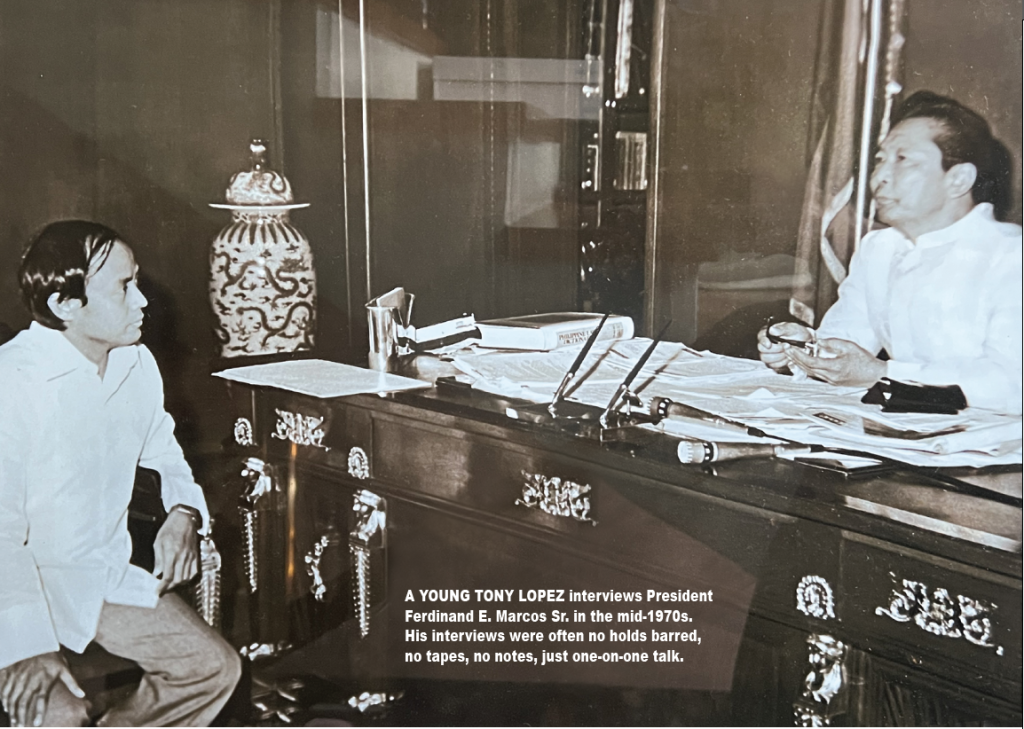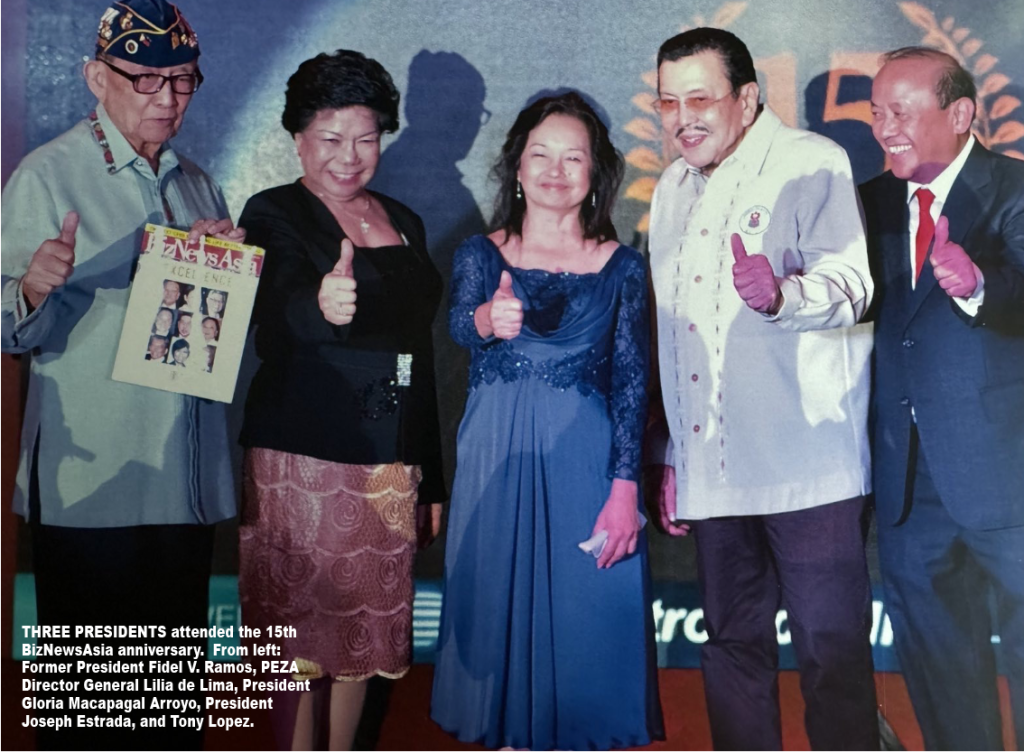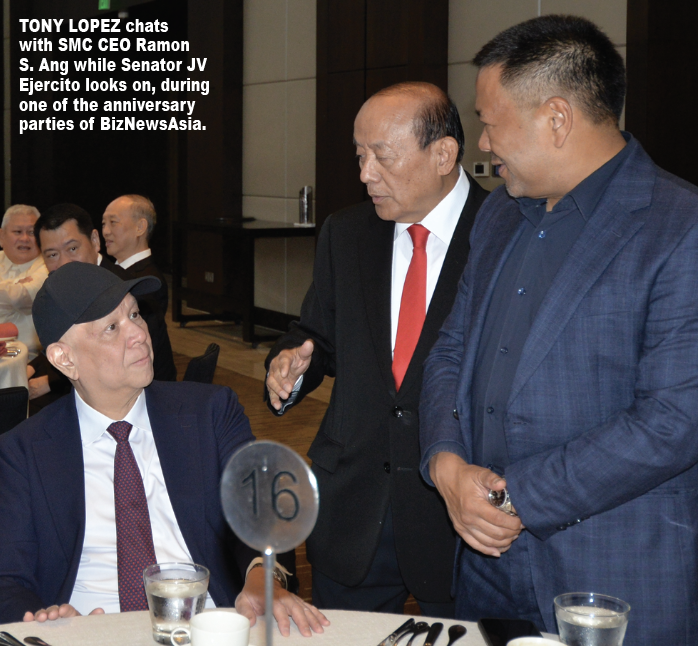By TONY LOPEZ

I texted this to my various viber groups:
“This month I turn 76. Sadly, the world is not getting any better. Society is not getting polite at all. Nor intelligent. In America today, lies, racism, bigotry, misogyny, hate, curses, even murder are the elements of a leading presidential candidate’s platform, if you can call it platform. He just might win. In Philippines, we just went through one of the most violent periods in our history. One of the most popular presidents ever is supposed to have killed 30,000, half of what the NPA killed in 55 years of rebellion. His daughter threatens to chop the incumbent president’s head off and excavate the remains of his dad to throw them into the nearest sea. His son hauled in P51 billion of our money and cannot explain where it went. It’s now normal to curse in every sentence. It is now normal for a teener not to be able to read, to write, to count, to understand and explain simple things. It’s a bold foreign policy to hate your neighbor. Today, the third largest disease after heart and lung problems is mental. Depression. Even nature is more crazy. It’s called climate change. A science. No wonder, Elon Musk’s bookings for the moon are overbooked. Lunacy, after all, is named after the moon. AI, the future, is accused of hallucination. Lies.”
This year marks my 54 years of professional journalism, starting in February 1970 when I joined the Manila Chronicle, moving to The Manila Times in 1971-1972 where I became senior business reporter, construction editor and acting business editor until martial law.
At the Times Journal, I became the youngest business editor. As its senior correspondent, I made Asiaweek Hong Kong the largest news weekly, its circulation rising from 200 copies in 1978 to 35,000 copies by the time of the Ninoy Aquino assassination in 1983. That stint gave me momentum to make my own weekly business magazine, BizNewsAsia, now 23 years old, a publishing success story.

Campus editor
Add to my 54 years of professional journalism my six years of campus journalism – two in high school when I was the editor-in-chief of The Quezonian, and four years in college when I became the managing editor of The Varsitarian, which I made into a weekly, of the University of Santo Tomas, Asia’s oldest university.
So 60 years of journalism. As a campus journalist and a professional journalist, I interviewed the two Macapagal presidents (Diosdado and Gloria Macapagal Arroyo); the two Aquino presidents (Corazon and Benigno Aquino III) and the two Marcos presidents (Ferdinand Sr. and Ferdinand Jr.). I probably am the only living journalist to have interviewed six presidents coming from the three families. They have reigned for nearly half a century, during the best and worst of times.
I spent many hours each week with president Joseph Estrada and interviewed his two senator sons, Jinggoy Estrada and JV Ejercito.
The experience with presidents makes me an expert on two things: one, political dynasties and two, presidential management styles.

RSA for president
In this light, I recall that my The STAR colleague Boo Chanco has suggested in his column that San Miguel Corporation chair and CEO Ramon S. Ang be the next president of the Philippines for his herculean efforts to make the notorious Ninoy Aquino International Airport into among the most modern and best in Asia. In passenger volume, NAIA is currently the fifth biggest in ASEAN.
In 30 months, if not less, RSA guarantees to deliver a totally modern NAIA – with a new terminal building, a new taxiway, eight floors of new parking space for 12,000 cars, the most modern equipment, the latest software and yes, new toilets. Immediately, RSA has reduced the prices of fast food restaurants at NAIA, requiring the likes of Jollibee and McDo to charge the same price for the same food outside.
RSA’s strategy seems simple: decongest, extend, expand. The parking lots have been decongested. Steep overnight parking fees of P1,200 removed a third of long-term parked cars, freeing up 1,800 slots instantly.
The terminals are being decongested. Philippine Airlines is assigned Terminal 1. Cebu Pacific is assigned Terminal 2. CebuPac has twice the passenger volume of PAL. This will decongest Terminal 3 for other carriers. Terminal 4 has been shut down to make way for a Terminal 2 extension on what used to be the Philippine Village Hotel.
The two runways are being extended. A new taxiway is being added. Some buildings and locators are being made to give way to the expanded and extended runways and taxiways. RSA guarantees to give the government P1 trillion in 25 years for managing NAIA.
RSA is the King of Airports. With 62 million passengers from NAIA, 100 million from NMIA and 7 million from Boracay, RSA can service up to 169 million passengers a year. Consequently, aviation’s share of GDP is expected to triple, to 10.3% of GDP. In three years, Philippine GDP will hit P31.55 trillion. A tenth of that is P3.1 trillion.
Under RSA, San Miguel began its reengineering in October 2008 amid the severest global recession and credit crunch in 80 years. He transformed San Miguel in ways no one could have imagined or have done better.
No Philippine enterprise has transformed itself so dramatically and radically in the last decade and a half as has San Miguel. Even while growing and strengthening its traditional core businesses like beer, foods and packaging, SMC went into petroleum refining and marketing, power generation, infrastructure, tollways, cement, mining, mass transit, autos, resorts and airports.
Today, 60% of SMC revenues come from businesses RSA set up or diversified into. RSA’s rise caps a half century of entrepreneurship and visioning. And he has just begun.
